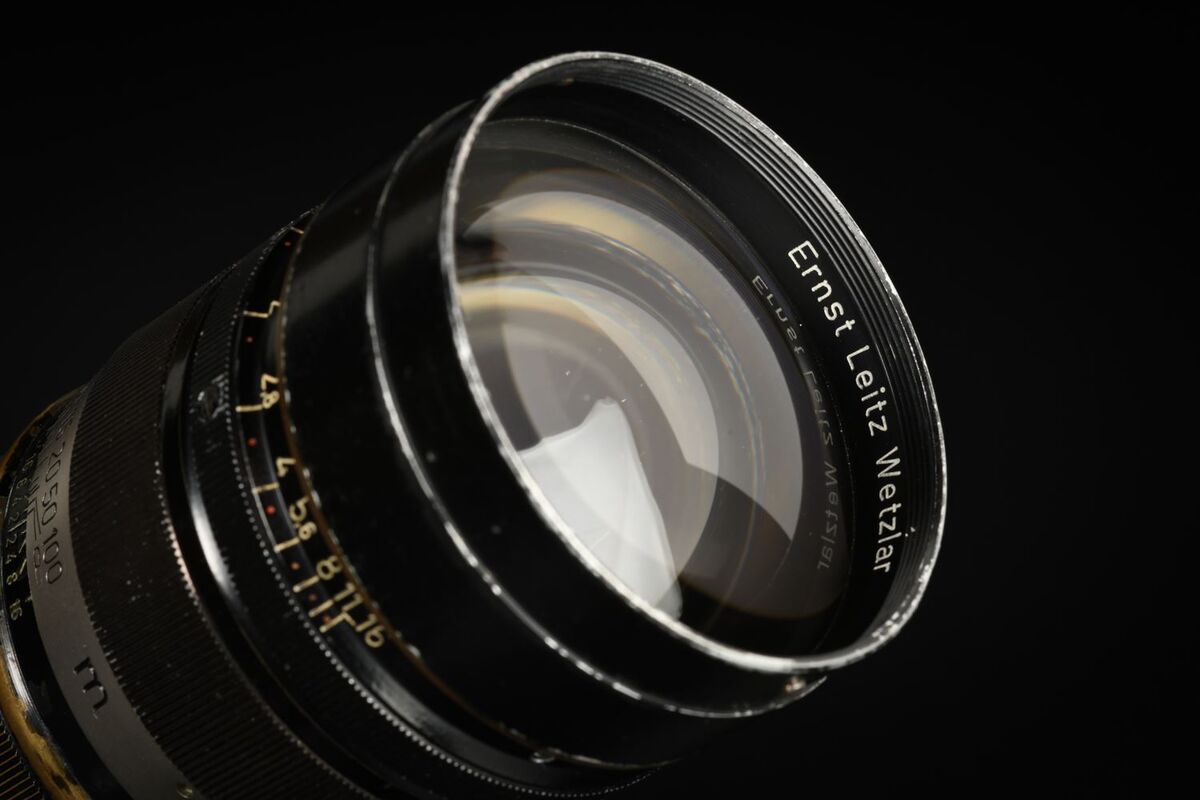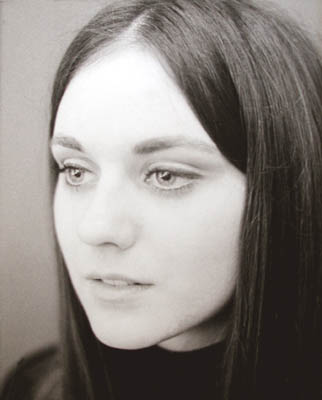Prime or zoom lenses -- does it even matter these days?
Feb 3, 2024 12:55:49 #
billnikon wrote:
The four folks who bought that print for $450.00 may disagree.
Well done Bill!




Feb 3, 2024 12:59:21 #
Orphoto wrote:
For my landscape work, I aim for the highest achievable quality and use only fast and heavy primes. Clearly not all will agree. For my nighttime astro & northern lights images they are essential. My approach is not for those interested in "good enough".
Good enough is good enough unless the viewer has microscopic eyes.
Feb 3, 2024 13:04:54 #
I am cursed with an eye for detail but have to admit today's top zooms are REALLY sharp. I have a bunch of primes but I've been using zooms more than I used to.
But resolution is not the only important aspect of a lens. Sometimes, a wider range of apertures is more important than a wider range of focal lengths. IMO, depth of field is the most important variable in how your images will look. When I'm in the mood for experimenting and creating special images, I usually reach for my RF 135 1.8L IS. I know this is thought of as a "portrait" lens but it is much more useful than that. Even when stopped down to, say, 5.6, the images still have a magical quality that my 70-200 can't match. Subjectively, I have found that primes seem to produce more compelling images, even when they aren't any sharper than some zooms. Some, like the EF 135 2.0L, gain almost cult like status.
With the R mount, Canon is clearly working harder on zooms and delivered several innovative lenses with more rumored to be coming. Some people believe they've been neglecting the prime lens lineup. Prime lenses may be going the way of stick shifts.
But resolution is not the only important aspect of a lens. Sometimes, a wider range of apertures is more important than a wider range of focal lengths. IMO, depth of field is the most important variable in how your images will look. When I'm in the mood for experimenting and creating special images, I usually reach for my RF 135 1.8L IS. I know this is thought of as a "portrait" lens but it is much more useful than that. Even when stopped down to, say, 5.6, the images still have a magical quality that my 70-200 can't match. Subjectively, I have found that primes seem to produce more compelling images, even when they aren't any sharper than some zooms. Some, like the EF 135 2.0L, gain almost cult like status.
With the R mount, Canon is clearly working harder on zooms and delivered several innovative lenses with more rumored to be coming. Some people believe they've been neglecting the prime lens lineup. Prime lenses may be going the way of stick shifts.
Feb 3, 2024 13:10:21 #
To summarize: Some Photographers prefer zooms, others prefer primes. The great thing about opinions is we can all be RIGHT!
Feb 3, 2024 13:48:03 #
JZA B1 wrote:
The keyword here is “usually”. It was true years back but high quality modern Zoom lenses offer excellent image quality in some cases exceeding the IQ of primes over some of the range. I understand that prime lenses usually offer higher image quality.
JZA B1 wrote:
Hmmm. My first thought was smart phone cameras don’t affect the market for interchangeable lenses. I think they are different markets. But thinking more about it, I rarely mount a wide prime lens on my interchangeable lens cameras. Because I can use my cell phone for wide shots. But given the fact that people use smart phones to take pics these days and quality seems to be good enough, does it even matter that primes offer slight advantage while having major disadvantage of fixed focal length? Do you still use primes at all? For what purpose?
Feb 3, 2024 14:24:13 #
JZA B1 wrote:
I understand that prime lenses usually offer higher image quality. But given the fact that people use smart phones to take pics these days and quality seems to be good enough, does it even matter that primes offer slight advantage while having major disadvantage of fixed focal length?
Do you still use primes at all? For what purpose?
Do you still use primes at all? For what purpose?
I use Micro 4/3. I have a 30mm f/2.8 macro lens and a 42.5mm f/1.7 portrait and video interview lens (equivalent to 60mm and 85mm primes on full frame).
Most of my other work is done with two zooms. They are sharp enough for what I do. They are 12-35mm f/2.8 and 35-100mm f/2.8, offering 24mm to 70mm and 70mm to 200mm coverage in full frame equivalent terms. They are pro grade glass.
Most folks who use both primes and zooms use primes for low light work and zooms for convenience.
Feb 3, 2024 14:25:06 #
JZA B1 wrote:
I understand that prime lenses usually offer higher image quality. But given the fact that people use smart phones to take pics these days and quality seems to be good enough, does it even matter that primes offer slight advantage while having major disadvantage of fixed focal length?
Do you still use primes at all? For what purpose?
Do you still use primes at all? For what purpose?
The comments and opinions expressed in this thread are informative and enlightening. It appears that Prime or Zoom doesn’t really matter at all. It used to be that photographers would do all they could to make a photograph as good as possible. Now, with the number of times the phrase is used in this thread, good enough seems to be the ultimate goal.
Feb 3, 2024 14:28:29 #
burkphoto wrote:
And there it is!!! … Most folks who use both primes and zooms use primes for low light work and zooms for convenience.
Well said.
Feb 3, 2024 14:34:08 #
Mac wrote:
The comments and opinions expressed in this thread are informative and enlightening. It appears that Prime or Zoom doesn’t really matter at all. It used to be that photographers would do all they could to make a photograph as good as possible. Now, with the number of times the phrase is used in this thread, good enough seems to be the ultimate goal.
That's probably because there were plenty of crappy zoom lenses in the 1960s and '70s. "Good enough" is now REALLY good!
I had an early 43-86mm Nikkor that wasn't worth using as a door stop! But once powerful and plentiful computers came along, computer-aided lens designs and advanced manufacturing techniques made much better zooms possible. The latest lenses for mirrorless interchangeable lens cameras are quite amazing.
Leica helped Panasonic make two zooms for Micro 4/3 that are stellar. 10-25mm f/1.7 fixed aperture and 25-50mm f/1.7 fixed aperture. Identical form factor, size, and nearly the same weight. Ideal for video. They replace all the primes between 20mm and 100mm in the full frame world!
Feb 3, 2024 14:34:20 #
Mac wrote:
…Now, with the number of times the phrase is used in this thread, good enough seems to be the ultimate goal.
Not for me.
Dismissing the weight, size, sharpness, speed and subject isolation advantage of primes is, in my opinion, a mistake (I have roughly an even number of each). There are now some excellent zooms, and I typically keep a 24-105L on my FF Canon and a 16-80 on my crop Fuji, but when I get really serious about IQ, low light, weight, portraits or subject isolation, I reach for my primes. Take your 70-200 f2.8 off and try an 85 f1.5, a 135 f2 or a 200 f2 instead, and you’ll know why.
Feb 3, 2024 14:44:10 #
burkphoto wrote:
Indeed!! That's probably because there were plenty of crappy zoom lenses in the 1960s and '70s. "Good enough" is now REALLY good! ..
Good quality modern glass is indeed really good. Better IQ at some focal lengths than an equivalent prime.
As you said earlier, primes are for lower mass and low light.
Feb 3, 2024 14:46:22 #
TriX wrote:
Not for me.
Dismissing the weight, size, sharpness, speed and subject isolation advantage of primes is, in my opinion, a mistake (I have roughly an even number of each). There are now some excellent zooms, and I typically keep a 24-105L on my FF Canon and a 16-80 on my crop Fuji, but when I get really serious about IQ, low light, weight, portraits or subject isolation, I reach for my primes. Take your 70-200 f2.8 off and try an 85 f1.5, a 135 f2 or a 200 f2 instead, and you’ll know why.
Dismissing the weight, size, sharpness, speed and subject isolation advantage of primes is, in my opinion, a mistake (I have roughly an even number of each). There are now some excellent zooms, and I typically keep a 24-105L on my FF Canon and a 16-80 on my crop Fuji, but when I get really serious about IQ, low light, weight, portraits or subject isolation, I reach for my primes. Take your 70-200 f2.8 off and try an 85 f1.5, a 135 f2 or a 200 f2 instead, and you’ll know why.
Those last three you mention are great when you need background blur, isolation, and bokeh effects. You get to zoom with your feet, which can be a very good thing indeed, because it teaches you to experiment with perspectives. But zooms are the staples of most pros these days, because they save time.
I think the answer as to what gear to use is, "It depends... on the situation." If I'm recording a video interview, or making a head-and-shoulders portrait, the 85mm FF equivalent is usually my go-to choice. If I'm doing any more-than-casual close-up work, or copy work, I'll grab the macro lens. The 24-70mm FF equivalent is my most-used lens. For travel, I'll take the longer zoom, too.
Feb 3, 2024 14:48:19 #
Advantages (IQ, weight, price, speed etc) can be huge for prime over zoom in many cases. Zoom offers variabilities. If a phone satisfies you needs, yes, you may forget about prime or zoom altogether.
Feb 3, 2024 14:50:12 #
JD750 wrote:
Indeed!!
Good quality modern glass is indeed really good. Better IQ at some focal lengths than an equivalent prime.
As you said earlier, primes are for lower mass and low light.
Good quality modern glass is indeed really good. Better IQ at some focal lengths than an equivalent prime.
As you said earlier, primes are for lower mass and low light.
Lumix makes some tiny Micro 4/3 primes. The 15mm f/1.7, 20mm F/1.7, 25mm f/1.7, and 42.5mm f/1.7 are ridiculously small and light. The 14-42mm pancake zoom is pretty small, too, but a bit soft and slow.
Feb 3, 2024 14:50:15 #
Timmers
Loc: San Antonio Texas.
JZA B1 wrote:
I understand that prime lenses usually offer higher image quality. But given the fact that people use smart phones to take pics these days and quality seems to be good enough, does it even matter that primes offer slight advantage while having major disadvantage of fixed focal length?
Do you still use primes at all? For what purpose?
Do you still use primes at all? For what purpose?
Oh, it matters. Portrait using the 8.5cm, f1.5 Summarex lens made in 1968 on Tri-X film.
The other lens is the classic Leica Summar 5cm f2 lens.
If you want to reply, then register here. Registration is free and your account is created instantly, so you can post right away.






